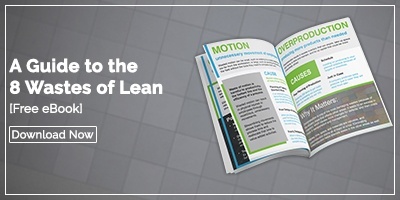 Many organizations look to minimize the eight types of waste identified in the Lean business methodology. The goal is to create a shameless and efficient flow of value to the customer. Ideally, no resources are used until needed, and every task contributes something for which customers are willing to pay. In the real world, achieving this is much more difficult than wanting to do it. That's why so many Lean techniques and tools have been created to help those who embark on this journey. Using software purpose-built to support this type of improvement work is one way to ensure success.
Many organizations look to minimize the eight types of waste identified in the Lean business methodology. The goal is to create a shameless and efficient flow of value to the customer. Ideally, no resources are used until needed, and every task contributes something for which customers are willing to pay. In the real world, achieving this is much more difficult than wanting to do it. That's why so many Lean techniques and tools have been created to help those who embark on this journey. Using software purpose-built to support this type of improvement work is one way to ensure success.
The 8 Wastes
The Lean method identifies eight specific types of waste that occur in business processes. This is helpful because some waste types are less apparent and might not jump out when your team starts to think about how to eliminate waste. They are:
Inventory
The inventory waste occurs when materials or finished products that are not immediately needed tie up capital and use space. The just-in-time production approach was developed to eliminate this problem, but excess inventory occurs beyond the manufacturing sector. Extra inventory might be building supplies, office equipment, medical supplies, or out-of-date textbooks.
Transport
Sometimes, it is necessary to move products, raw materials, and work in progress from place to place in the course of production. However, every time something is moved, an opportunity for damage, loss, or delay is introduced. Moving things about also adds expense that may not generate value for the customer.
Waiting
The waste of waiting refers to a function that cannot proceed because downstream inputs are missing. This issue isn't limited to manufacturing. It occurs in healthcare, construction, software development, and many other sectors.
Movement
The waste of movement is like that of transport, but it is about the unnecessary movement of people and equipment, rather than products or raw materials. Poorly designed workspaces frequently cause unneeded movement.
Overproduction
The waste of overproduction happens when more product is created than needed. Overproduction is especially problematic because, in addition to the waste of effort and resources that make the product, the result is usually the waste of inventory. Overproduction is a double-edged sword when it comes to waste.
Over-processing
Over-processing means adding features or complexity to products that the customer does not want. Software features that are rarely used, unnecessary diagnostic tests, and excess packaging are all over-processing examples.
Defects
Defects are the type of waste that is most easy to spot. Reprocessing, fixing, or restarting processes adds no customer value and eats up resources.
Human Potential
The waste of human potential can make all of the difference in achieving the goals of your organization. The people who operate the processes that produce value are in the best position to develop ideas for innovating and improving operations. Ignoring that resource is the most regrettable form of waste of all.
Using Technology to the Waste Reduction Challenge
Continuous improvement software can give a massive boost to organizations dedicated to finding and minimizing all forms of waste. Here's how it helps:
Gather Opportunities for Improvement
The first step in reducing waste is finding where and when it is happening. Improvement software makes it easy for everyone who notices an opportunity for waste reduction to document and report it. Employees put all opportunities into one central database, giving managers an easy way to prioritize them for action. It is ideal for the software to work on any device, allowing workers to submit ideas for improvement from anywhere at any time.
Support Cross-Functional Projects
Typically, the steps in a process where different functions intersect are those where waste happens. Frequently friction in the handoff causes waiting, unneeded motion, and unhelpful movement. Improvement software helps by getting everyone on the same platform to manage all improvement projects. The approach improves collaboration, makes decision making more straightforward, and helps sustain improvement momentum.
Streamline the Flow of Work
Spreadsheets and email are perfect tools for many tasks but not very effective against the eight wastes. A better option is a solution with built-in alerts and notifications to let the right people know when action is needed. Supervisors get real-time visibility into improvement projects and new opportunities so they can take immediate action to resolve any challenges that arise.
Track Results
The ability to quantify the results of improvement work is the key to a successful initiative. When you can demonstrate how waste reduction has impacted the organization in terms of quality, cost, time to market, and customer satisfaction, you'll get support and engagement, leading to a snowball effect. Improvement software makes data collection and analysis painless.
There is no one approach to eliminating the eight wastes of Lean. But technology makes it easier to capture, resolve, and quantify waste. Implementing an improvement-based solution is the best way to deliver as much value as possible.




Add a Comment